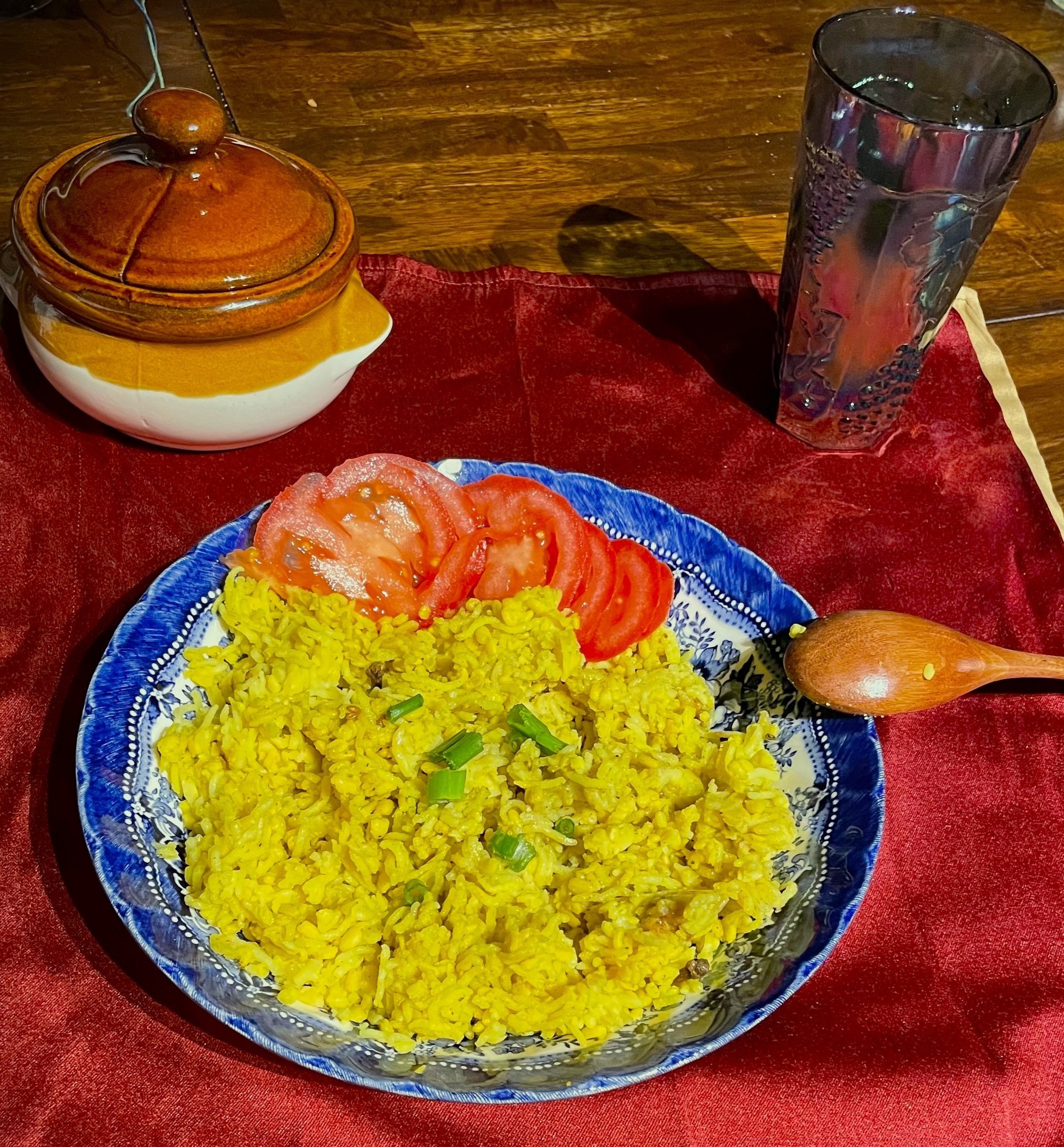Recipe: Kitchari (Khichdi)
Kichadi: A Healing and Nutritious Indian Dish
Food can be a powerful tool for healing and nourishing our bodies and minds. One dish that exemplifies this principle is kichadi, a traditional Indian dish that has been enjoyed for centuries for its comforting and restorative qualities.
At its core, kichadi is a simple and nutritious dish that typically consists of rice, lentils, and a variety of spices and vegetables (please note, not everyone includes vegetables in their kichadi). These ingredients, when combined, create a flavorful and satisfying meal that can be enjoyed as a main course or as a side dish.
But what sets kichadi apart from other dishes is its healing properties. Each of its ingredients is carefully chosen for its unique health benefits, making it a nourishing and restorative meal for the body and mind.
Rice, for example, is a staple food in many parts of the world and is an excellent source of carbohydrates. In appropriate amounts, it provides the body with sustained energy.
Lentils, on the other hand, are a great source of protein and fiber. They help improve digestion, promote heart health, and provide a sustained release of energy throughout the day.
The spices used in kichadi, such as turmeric, cumin, coriander, and ginger, are also known for their healing properties. Turmeric, for example, is a potent anti-inflammatory and antioxidant that can help reduce inflammation in the body and support immune health. Cumin and coriander are excellent sources of iron, which is essential for healthy blood cells and energy levels. Ginger, meanwhile, has anti-inflammatory and anti-nausea properties and can help soothe the digestive system.
Finally, the vegetables that some people include in their kichadi provide a wide range of nutrients and add to the dish's overall health benefits. For example, carrots are a great source of beta-carotene, which is essential for healthy skin and eyesight. Spinach is high in iron, calcium, and other essential nutrients, while tomatoes are a great source of lycopene, a powerful antioxidant that can help protect against cancer and other diseases.
In addition to these health benefits, kichadi may also have potential benefits for fertility. The combination of rice and lentils provides a complete protein, which is important for reproductive health.
I’ve been told that in India, kichadi is often served in hospitals and offered to patients just as bread is offered in US hospitals. This speaks to the dish's popularity and reputation as a healing and nourishing meal.
As a psychiatric nurse practitioner, I believe in the power of holistic and integrative medicine. Food is an essential part of this approach, and dishes like kichadi can play a crucial role in promoting overall health and well-being. So why not try making kichadi for your next meal? Try out the recipe below.
Your body and mind will thank you!
Ingredients
1/2 cup Parsley, fresh
1/2 tsp Ginger, fresh or 1/4 tsp minced
1 slice Lime or lemon
3/4 cup Basmati rice
1/4 tsp Black pepper
1 tsp Sea salt (salt to taste at the end)
1/4 tsp Turmeric, ground
1 tsp Cumin seeds
1 tbsp Ghee or olive oil (if you are vegan/plant-based/would like a non Ghee/oil option try 2 tbsps water)
4 cups Water
• 1/2 cup Moong dal (split mung beans)
Instructions
In a medium bowl, combine the rice and moong dal. Pour enough water to cover the mixture and soak for 30 minutes. After 30minutes, pour the mixture into a fine mesh strainer and rinse with cold water until it runs clear.
Warm the oil or ghee on medium-low heat in a medium pot. Carefully add the cumin seeds and let them cook for about a minute until the seeds start to brown and become fragrant. Add the ginger and ground turmeric.
Add the rice and dal mixture into the pot. Season with sea salt and black pepper. Stir and add the 4 cups of water.
Increase the heat to medium-high to bring the mixture to a gentle boil. Turn the heat down immediately to a gentle simmer. Simmer for 30 minutes, uncovered, stirring occasionally until you get a porridge-like consistency. It should be soft and creamy.
Taste the kitchari to make sure the texture is soft. If not, you may need to let it cook a little longer. Turn off the heat and adjust the seasoning, if needed, and stir again. Serve or cool down completely and refrigerate in a sealed container for 3 days.
***If you are using a induction stovetop like mine, the cooking time could take more than an hour but patience and mindfulness will get you through the wait of eating this ayurvedic yummy and nutrient dense meal.
This recipe is a a combination of my mother-in-law’s amazing kitchari, Sapana’s from the Real + Vibrant and our family’s preference.


